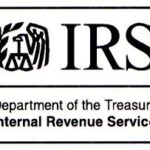
Qualifying Arrangement what could this possibly mean????
With the new health care reform legislation, there seems to be so much more information to learn. Just how does one sort through it?
We’ve broken down each aspect of how a California small business owner qualifies for these tax credits, hopefully making you a little more familiar the health care benefit and how it impacts you. Now, we can delve a little further into some of the details regarding how you qualify for these tax credits.
How Does One Qualify For Tax Credits?
We discussed earlier the basic requirements to receive these tax credits. To refresh your memory these include:
- Premiums paid for employee health insurance: A qualifying arrangement of a uniform percentage of 50% of the employee only premium cost. In addition, composite billing or uniform premium may qualify, even if it is less than 50%.
- 25 full-time equivalent employees (FTEs) for the tax year: You may be able to meet this
requirement even if you had 25 or more employees. - Annual average wages for the tax year of less than $50,000 per FTE: Determined by taking your total gross salaries and divide by the number of FTEs.
Qualifying Arrangements Broken Down
Let’s delve into the term “qualifying arrangements” specified in the first point. Qualifying employers must pay their premiums under a “qualifying arrangement.” What is this “qualifying arrangement” you ask? Designated by the IRS (IRS Notice 2012-82), it stipulates that:
- Employers must pay a uniform percentage of no less than 50% of the premium cost of coverage for each employee in the designated plan.
- Each premium must be paid for through a specified insurance company or HMO.
Small business owners can benefit from the credit through other types of insurance besides major medical (such as dental, vision, and others). However, plans for each employee must meet the qualifying arrangement standard independently. Plans cannot be aggregated together (for example, a medical insurance plan is separate from a vision plan)
Only premiums paid under the qualifying arrangement are counted in the calculation of the credit. It’s important to understand that the amount of credit you can claim under the qualifying arrangements is limited by three aspects:
- The number of employees in your company and their annual salaries
- Average premiums for the small market group in California
- Amount of taxable income
There are some exceptions to this rule, for example if your health plan is tiered or based on age, you may still qualify for the tax credit even if you pay less than 50% of an employee’s premiums.
With that being said, let’s take a closer look at the fine print on average premiums for the small business market in the next blog.





